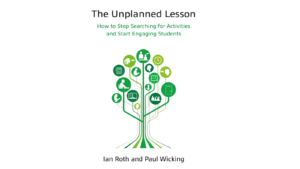By Shaun Wilden
Mobile Learning
Oxford University Press
ISBN 978-0-19-420039-4
 This slim volume of around 100 pages is all about helping teachers to come to terms with and exploit mobile devices. So often learners are discouraged from using phones, tablets etc in the classroom and sometimes for valid reasons but this book offers a guide to teachers embattled by their students’ apparent addiction to their phones in order to channel that very addiction in educational, creative and fun ways.
This slim volume of around 100 pages is all about helping teachers to come to terms with and exploit mobile devices. So often learners are discouraged from using phones, tablets etc in the classroom and sometimes for valid reasons but this book offers a guide to teachers embattled by their students’ apparent addiction to their phones in order to channel that very addiction in educational, creative and fun ways.
The three ‘Parts’ (which are subdivided into various categories) are entitled: Implementing Mobile Devices, Taking the First Steps and, Mobile Devices: Projects and Beyond.
Part 1 offers an extremely well designed introduction to the general use of mobile devices including sensible and apposite awareness-raising on such matters as the possibility of teasing amongst students who have or don’t have the latest whiz-bang Iphone or whatever it might be.
Part 2 examines in a worthwhile amount of depth, some basic ideas and processes, noting that some of the more common apps used on mobile devices can be used creatively and without spending too much (or indeed, any) money. Part 2 also moves into interesting areas such as the use of QR codes and audio recording – matters which will surely engage most school-age learners.
Part 3 looks at somewhat more advanced uses for mobile devices such as video and animation, avatars and using a digital course book. All in all, the author somehow manages to give enough information for an IT Luddite to get involved while also keeping the IT savvy teacher busy with new ideas – no mean feat, I suggest.
Choosing a random chapter, section 5 of Part 3 looks at QR codes, starting with a clear introduction and explanation of what they are and why they are useful.
This section offers a number of fascinating activities such as the creation of QR codes at 3 language levels which when revealed offer students tasks on using modal verbs, appropriate to their level. Other interesting and potentially motivating activities include setting a QR code based treasure hunt or tour of the school with student-made QR codes at important locations and much more.
The book is interspersed with ‘Why this Works’ markers which provide a rationale and an explanation for certain activities. There are also ‘Get it Right’ spots which offer straightforward advice to the teacher on how to use and extend various activities.
There is a handy glossary which offers definitions of around 40 key terms, some of which I knew and some not so much! The final pages of the book are dedicated to a list of useful apps and websites which is a very handy reference tool indeed.
All in all, this well-designed book presents an ideal quantity of information on sensibly employing mobile devices in education, ‘ideal’ because there is sufficient guidance to get one started while avoiding overload but also engaging with teachers who have a higher level of IT experience as well as giving teachers a spring-board from which to develop their own ideas with their students.




